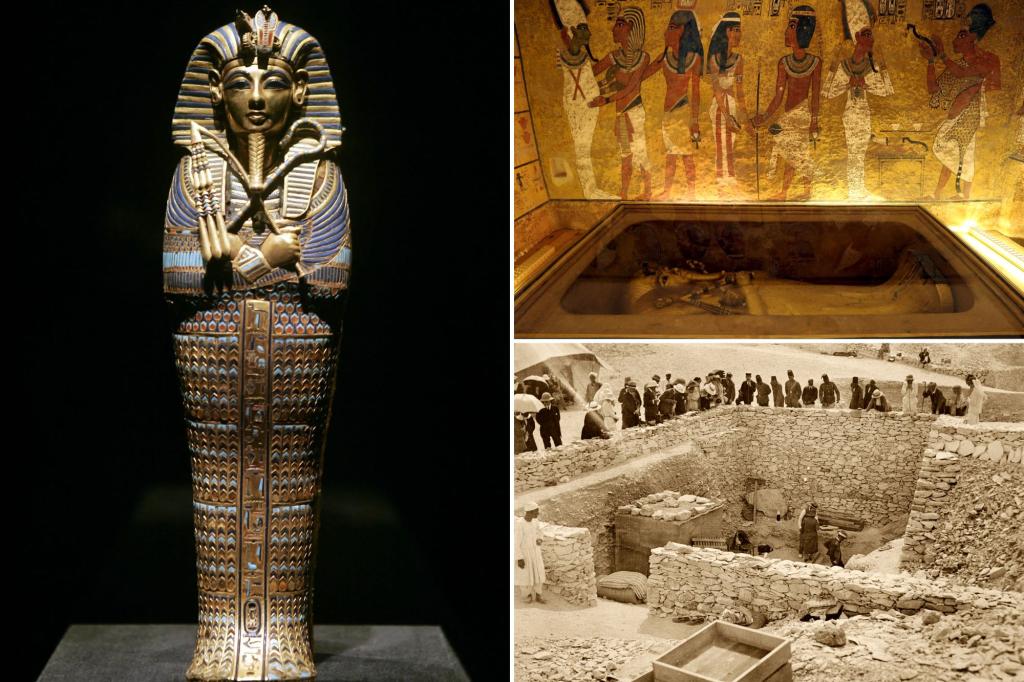King Tut’s tomb mysterious ‘Pharaoh’s Curse’ solved, scientists claim

Way of life
The disturbing curse at King Tutankhamun’s tomb in Egypt has baffled archaeologists because it is feared to be linked to the mysterious deaths of several of the excavators who discovered it in 1922.
However, a scientist now claims to have solved the mysteries of the infamous ‘Pharaoh’s curse’ more than 100 years later.
Toxic levels of radiation emanating from uranium and toxic waste are believed to have remained inside the tomb since it was sealed more than 3,000 years ago, Ross Fellowes wrote last month in the Journal of Scientific Exploration (JSE).
The level of radiation inside Tutankhamun’s tomb is so high that anyone who comes into contact with it could very likely develop a fatal dose of radiation sickness and cancer.
“Both contemporary and ancient Egyptian populations are characterized by an unusually high incidence of hematopoietic, bone, blood, and lymph cancers, for which one of the major known causes is radiation exposure,” Fellowes wrote in his study.
However, this radioactivity is not limited to the tomb of Tutankhamun.
Fellowes revealed that “unusually high levels of radiation were documented in the ruins of Old Kingdom tombs” and were widespread across sites in Egypt.
“Radiation was detected by the Geiger counter at two sites in Giza adjacent to the pyramids,” he wrote, adding that radon – a radioactive gas – was also detected in “several underground tombs in Saqqara.”
These readings were all found to be “intensely radioactive”.
“Modern studies confirm very high radiation levels in ancient Egyptian tombs, on the order of 10 times accepted safety standards,” the study says.
It is also speculated that those who built the ancient tombs were aware of the toxins, based on the strange warnings carved into the walls.
“The nature of the curse was explicitly inscribed on some tombs, with one presciently translated as ‘those who break this tomb will meet death from a disease no doctor can diagnose’,” a writes Fellowes.
Other ominous translations, such as “forbidden” because of “evil spirits,” may have significantly fueled fears that supernatural curses persist at ancient sites.
These fears intensified with the mysterious death of Lord Carnarvon, who financed the excavation in 1922 and who is said to have gone through the treasure-filled rooms – and several others after unsealing the tomb.
“Carnarvon was dead within weeks of the uncertain diagnosis of blood poisoning and pneumonia,” Fellowes wrote.
Egyptologist Arthur Weigall reportedly told colleagues that Carnarvon would be “dead within six weeks” of his entry, according to the study.
Howard Carter, the first person to enter Tutankhamun’s tomb with Carnarvon, died in 1939 after a long battle with Hodgkin’s lymphoma, believed to be caused by radiation poisoning.
British Egyptologist and independent excavator Arthur Weigall was present at the opening of Tut’s tomb and is also credited with starting the “myth” of the curse.
He died of cancer at age 54 in 1934.
In total, six of the 26 people present at the opening of the tomb died in less than a decade from asphyxia, stroke, diabetes, heart failure, pneumonia, poisoning , malaria and exposure to X-rays.
While the deaths could be considered strange, the curse theory was also likely fueled by the oddities that occurred during its opening.
Carnarvon is believed to have suffered a mosquito bite which left him seriously infected.
According to National Geographic, at the time excavators opened the tomb, Cairo reportedly suffered a strange power outage and a strange sandstorm.
At one point during the excavation, Carnarvon’s favorite dog reportedly let out a bloodcurdling howl and suddenly fell dead.
From a historical perspective, the discovery of the tomb in the Valley of the Kings is considered one of the most fascinating discoveries that gave modern society insight into the journey of Egyptian royalty into the afterlife.
Five thousand objects, including solid gold burial shoes, statues, games and strange animals, have been discovered in Tutankhamun’s tombs.
It will take ten years for excavators to rid the tomb of its treasure.
The unsealing and study of the tomb is also credited with launching the modern era of Egyptology.
Tutankhamun ascended the throne as pharaoh around the age of nine or ten and reigned between 1332 and 1323 BC.
However, he died at the age of 18.
There is no record of Tutankhamun’s death and how the young pharaoh died remains a mystery.
However, Tutankhamun is believed to have suffered from several health problems, probably related to the fact that his father, Akhenaten, and his mother, Nefertiti, were siblings.
Load more…
{{#isDisplay}}
{{/isDisplay}}{{#isAniviewVideo}}
{{/isAniviewVideo}}{{#isSRVideo}}
{{/isSRVideo}}
News Source : nypost.com
Gn world





